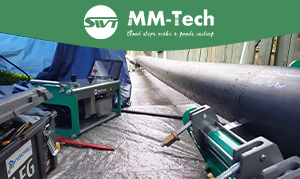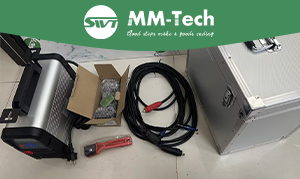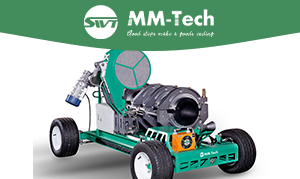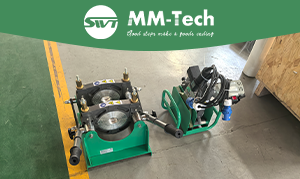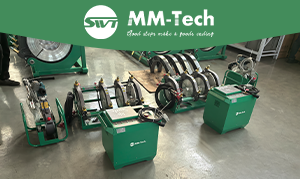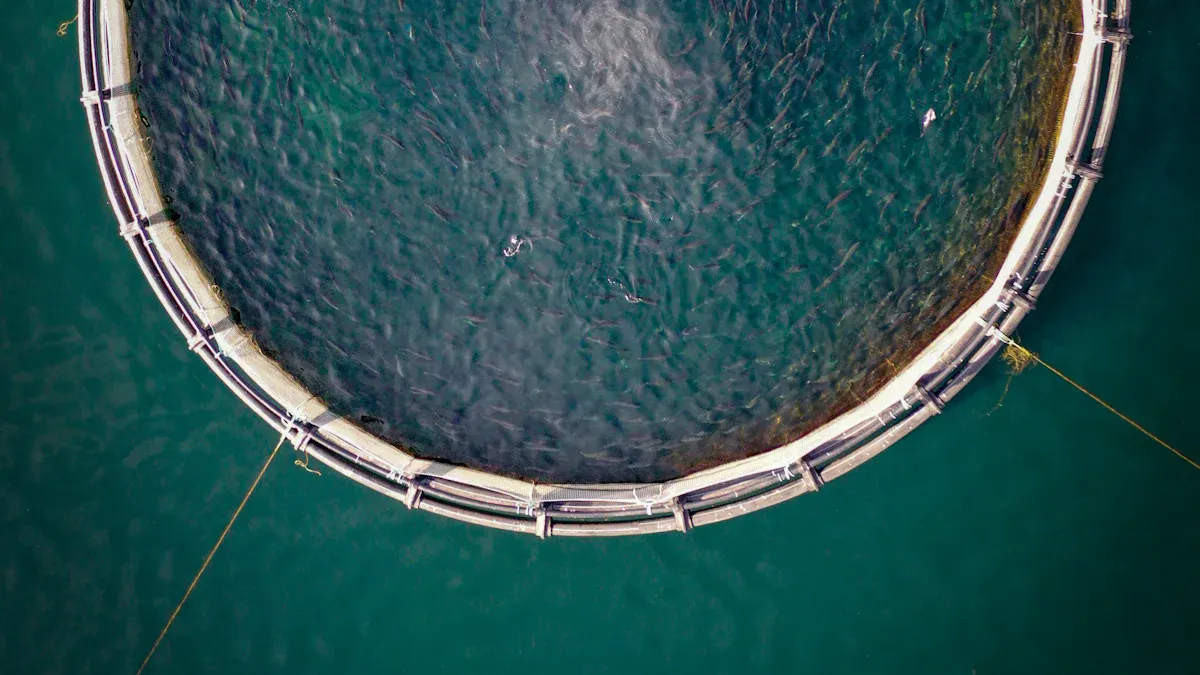
When you build a floating cage for tilapia, you need the right plastic welding tools. These tools help you join HDPE and polyethylene pipes, making sure your fish and tilapia stay safe.
HDPE joints last up to 30 years in aquaculture, resist strong forces, and keep water inside.
Good plastic welding tools prevent leaks, protect both fish and vegetables, and keep your cage strong for tilapia farming.
Key Takeaways
Use the right plastic welding tools like hot air welders and extrusion welders. These tools help make strong joints that do not leak. This keeps your fish cages safe and strong.
Always use welding rods and tools that match your cage materials, like HDPE or polyethylene. This helps your cage connections last a long time and stay strong.
Wear safety gear like heat-resistant gloves and safety glasses. This keeps you safe while welding and helps you build cages that last.
Essential Plastic Welding Tools
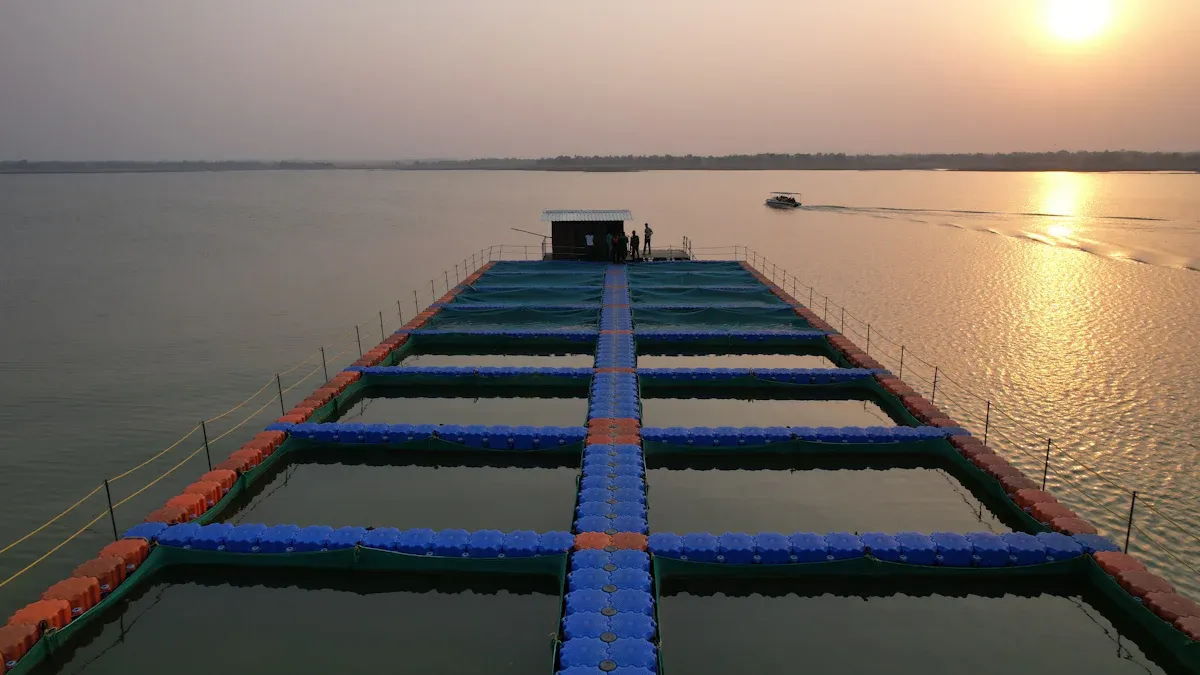
When you build a floating cage for tilapia or an integrated floating cage, you need the right plastic welding tools. These tools help you create strong, watertight joints that last in tough aquaculture environments. Let’s look at each tool you need and why it matters.
Hot Air Welders
Hot air welders use a stream of heated air to melt the edges of HDPE or polyethylene pipes and sheets. You guide the tool along the joint, and the melted plastic fuses together as it cools. This method works well for making long, straight seams or repairing small cracks.
You can find reliable hot air welders from brands like Leister (for example, the Triac S) and MM-Tech. These brands offer models with adjustable temperature controls, which help you avoid overheating the plastic. Always choose a welder that matches the thickness and type of plastic you use in your cage.
Extrusion Welders
Extrusion welders take plastic welding to the next level. These tools feed melted welding rod material directly into the joint, creating a thick, strong bond. You use extrusion welders for thicker pipes or when you need to fill gaps between parts.
The Weldplast S2 from Leister and MM-Tech’s extrusion welders are popular choices. These tools let you control the flow and temperature of the melted plastic, which is important for making sure your tilapia cage stays leak-free and strong.
Welding Rods
Welding rods act as the filler material during plastic welding. You must use rods made from the same grade of HDPE or polyethylene as your pipes and sheets. This ensures the joint will be just as strong and durable as the rest of your cage.
HDPE welding rods are easy to use with thermoplastic welding equipment.
They have low moisture absorption, so joints stay strong even underwater.
HDPE rods resist chemicals and corrosion, which is important for aquaculture.
You can choose rods in different grades, like FDA compliant, UV stabilized, or marine grade, to match your project.
Always check that the rod matches your base material for the best results.
Successful welding depends on using rods made from high-grade resins that match your pipes. This gives you joints that last for years, even in harsh conditions.
Nozzles and Tips
Nozzles and tips control how heat and air flow from your welding tool. The right nozzle helps you make clean, even welds.
Speed welding nozzles with rod feed channels can increase your work speed by up to 30%.
Micro tips (3-5mm) let you do precise work, which is great for small repairs.
Wide slot nozzles (20-40mm) help you weld large areas evenly.
Choose 5mm round nozzles for spot welding and 15mm flat nozzles for seams.
Quick-change nozzles and rotating heads make it easier to reach tight spots.
Specialized nozzles help you control airflow and heat, so you avoid overheating or bubbling the plastic. Using a digital temperature controller or infrared thermometer helps you keep the right temperature for each material.
Clamps and Pliers
Clamps and pliers hold your pipes and sheets in place while you weld. This keeps the parts steady and lined up, so your joints come out straight and strong.
You can use simple spring clamps for small jobs or heavy-duty pipe clamps for larger sections. Pliers help you grip and adjust parts without burning your hands. Always use tools that fit the size and shape of your materials.
Safety Gear
Plastic welding tools get very hot and can cause burns or eye injuries. You should always wear:
Heat-resistant gloves to protect your hands.
Safety glasses or a face shield to guard your eyes from sparks and hot plastic.
A long-sleeved shirt and pants to cover your skin.
A respirator mask if you work in a space with poor ventilation.
Staying safe lets you focus on building a strong, reliable cage for your tilapia.
Tip: Always use plastic welding tools that are compatible with HDPE and polyethylene. This ensures your floating cage or integrated floating cage will last longer and keep your tilapia safe.
You can trust brands like MM-Tech and Leister for reliable, high-quality plastic welding tools. These brands design their products for tough jobs in aquaculture and other demanding fields.
Choosing Tools for Floating Cage Projects
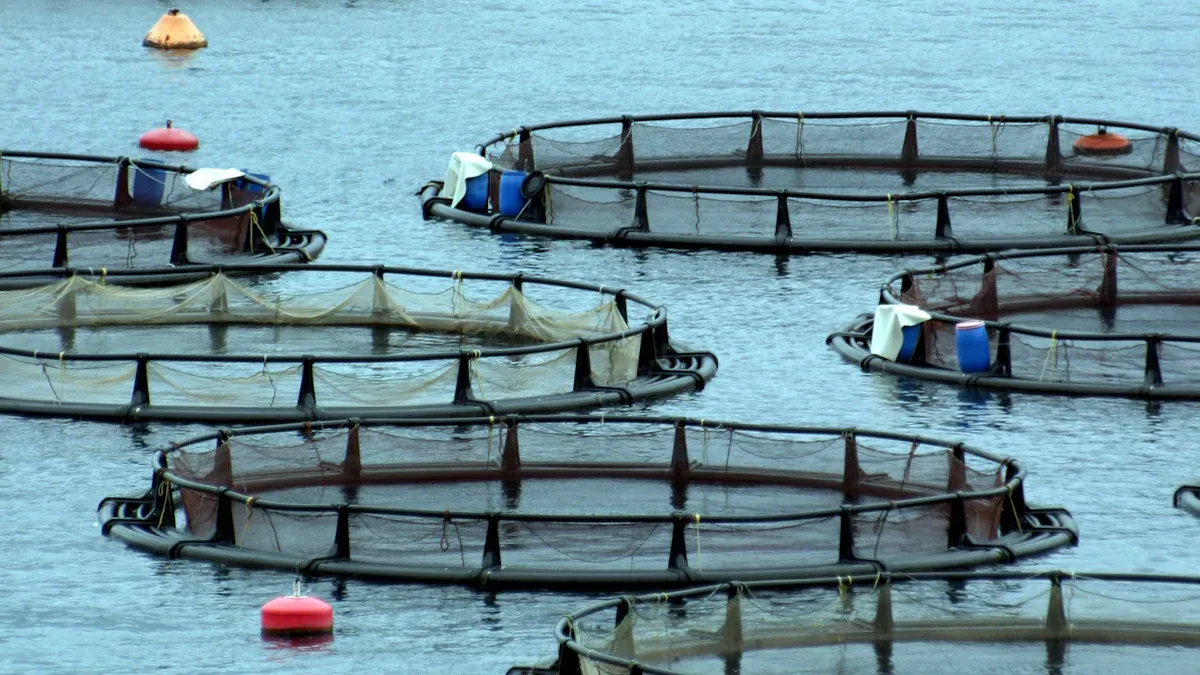
Material Compatibility
You must use welding tools that match your cage materials. Most floating cages use HDPE or polyethylene pipes. Always check if your welder and rods work with these plastics. If you build an integrated floating cage, pick tools for both thick and thin pipes. This keeps your tilapia and other fish safe.
Durability and Ease of Use
Pick tools that last in tough marine places. Welders with IP54-rated parts resist water and damp air. Digital controls help you set the right temperature. This makes your welds stronger. Handles that fit your hand well help you work longer. Good tools help you build cages that protect fish and vegetables for many years.
Budget and Brand
Decide how much money you want to spend before shopping. You can find welders at low, medium, and high prices. For most tilapia cages, a mid-range welder is a good choice. Experts say no tool works for every job. Brands like Leister and MM-Tech have models for all budgets. Always compare things like digital controls and support after you buy.
Best Practices
Use tack welding to hold parts before the final weld. Work on a flat surface to keep pipes straight. Clean your tools after each use to stop buildup. Follow rules for temperature and cooling times. This helps you make strong, watertight joints.
Safety Tips
Wear heat-resistant gloves and safety glasses every time you weld. Pick tools with auto-shutdown and thermal overload protection. The table below shows important safety features:
Safety Feature | Benefit |
|---|---|
Auto-shutdown | Stops the tool from getting too hot |
Digital temperature | Makes welds strong and safe |
IP54 rating | Keeps tools safe in wet places |
PPE (gloves, glasses) | Protects you from burns and splashes |
These steps help you build safe cages that last a long time for your fish and tilapia.
The right plastic welding tools help you make strong cages for fish and vegetables.
Pick good tools that work well with your materials to keep your aquaculture safe.
Using trusted brands gives you better results and fewer problems.
Always use the best ways to build so your cages stay safe and last a long time.
FAQ
What is the best way to join HDPE pipes for floating cages?
You should use a hot air welder or extrusion welder. These tools create strong, watertight joints that last in aquaculture environments.
How do you choose the right welding rod for your project?
Always match the welding rod material to your pipe or sheet. This gives you a strong, long-lasting joint for your floating cage.
Do you need special safety gear for plastic welding?
Yes. You should wear heat-resistant gloves, safety glasses, and a mask. These protect you from burns, fumes, and hot plastic.


